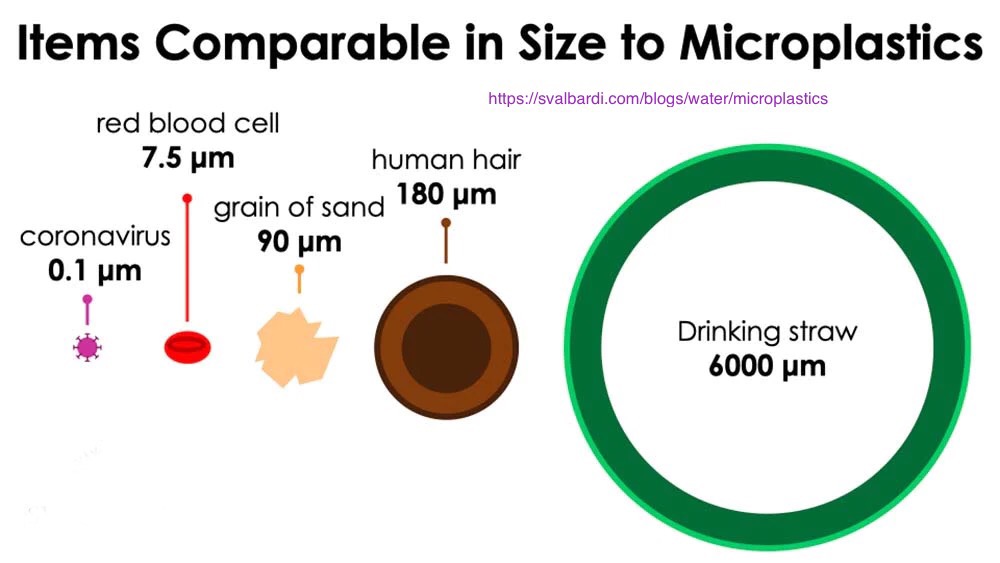Hey there, eco-warriors! Today, we're diving into the fascinating world of microplastics and the incredible efforts being made to measure these tiny troublemakers.
First off, let's talk about what microplastics are. These are tiny plastic particles, smaller than 5 millimeters, that break down from larger plastic products. They're everywhere - in our oceans, our food, and even the air we breathe. But here's the kicker: to truly address the microplastics problem, we need to understand and measure it accurately.
That's where the work by George Caceres and other microplastics researchers at NIST and the University of Maryland, comes in. They are developing instruments to measure microplastics as small as 1-5 micrometers. To put that in perspective, a human hair is about 17-180 micrometers wide. We're talking seriously tiny!
Different items as compared in size to a strand of Human Hair.
One of the tools they use is called single particle inductively coupled plasma mass spectrometry (spICP-MS). It's a mouthful, we know, but it's a game-changer in microplastics research. This tool helps analyze the elements in plastics, particularly carbon, which is a major component of plastic polymers.
But measuring carbon in microplastics is like looking for a specific piece of hay in a haystack. It's challenging, but they're making progress. They're also looking at other elements added to plastics, which could give us new ways to assess their environmental and health impacts.
Looking ahead, the team is aiming to refine their techniques to measure microplastics as they exist in the real world - wet, dirty, and damaged. They hope to eventually collect samples from rivers and other natural areas to study how microplastics are affected by the environment.
Now, you might be wondering why this matters. Well, there's growing concern about how microplastics affect our environment and health. For instance, toxic elements can leach from plastics into soil or water. By developing more robust measurement methods, one can better understand these effects and work towards solutions.
The good news? We're not alone in this fight. There's a dedicated community of scientists and researchers working tirelessly to solve the microplastics problem. And you can be part of the solution too! Here are some simple steps you can take:
- Reduce your use of single-use plastics
- Switch to natural fibres wherever possible
- Choose products with minimal plastic packaging
- Support businesses that use sustainable materials
- Participate in local beach or river clean-ups
While the challenge of plastic pollution might seem overwhelming, it's not insurmountable. Researchers like George are working hard to develop innovative solutions and technologies. The goal is to provide a better understanding of these materials, paving the way for other researchers to develop techniques and tools to address the plastics crisis.
So, the next time you see a plastic bottle or bag, remember: there's a whole world of science dedicated to understanding and solving the microplastics problem. And with your help, we can make a real difference. Let's keep pushing for a plastic-free future!
Source: National Institute of Standards & Technology, USA



